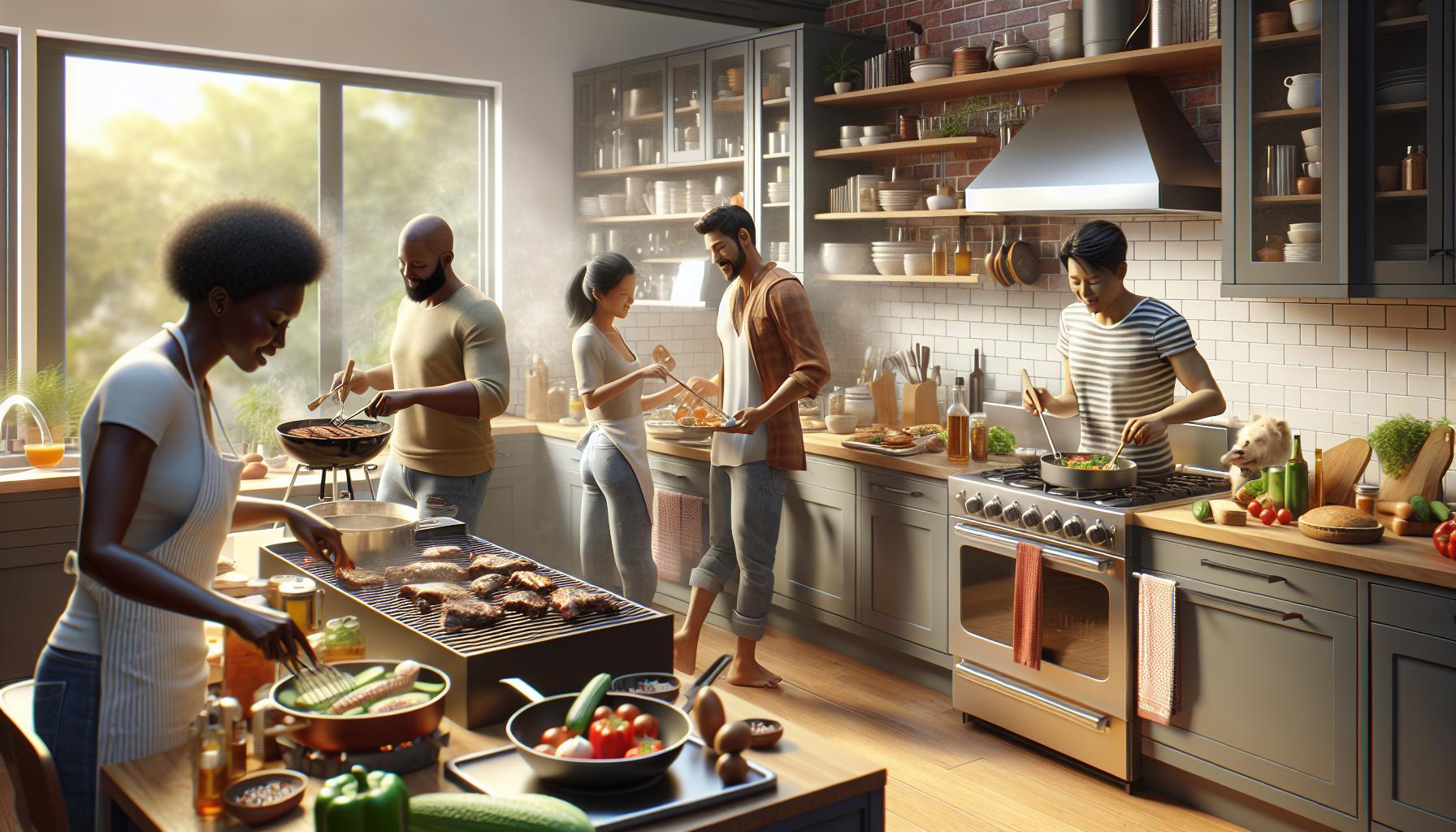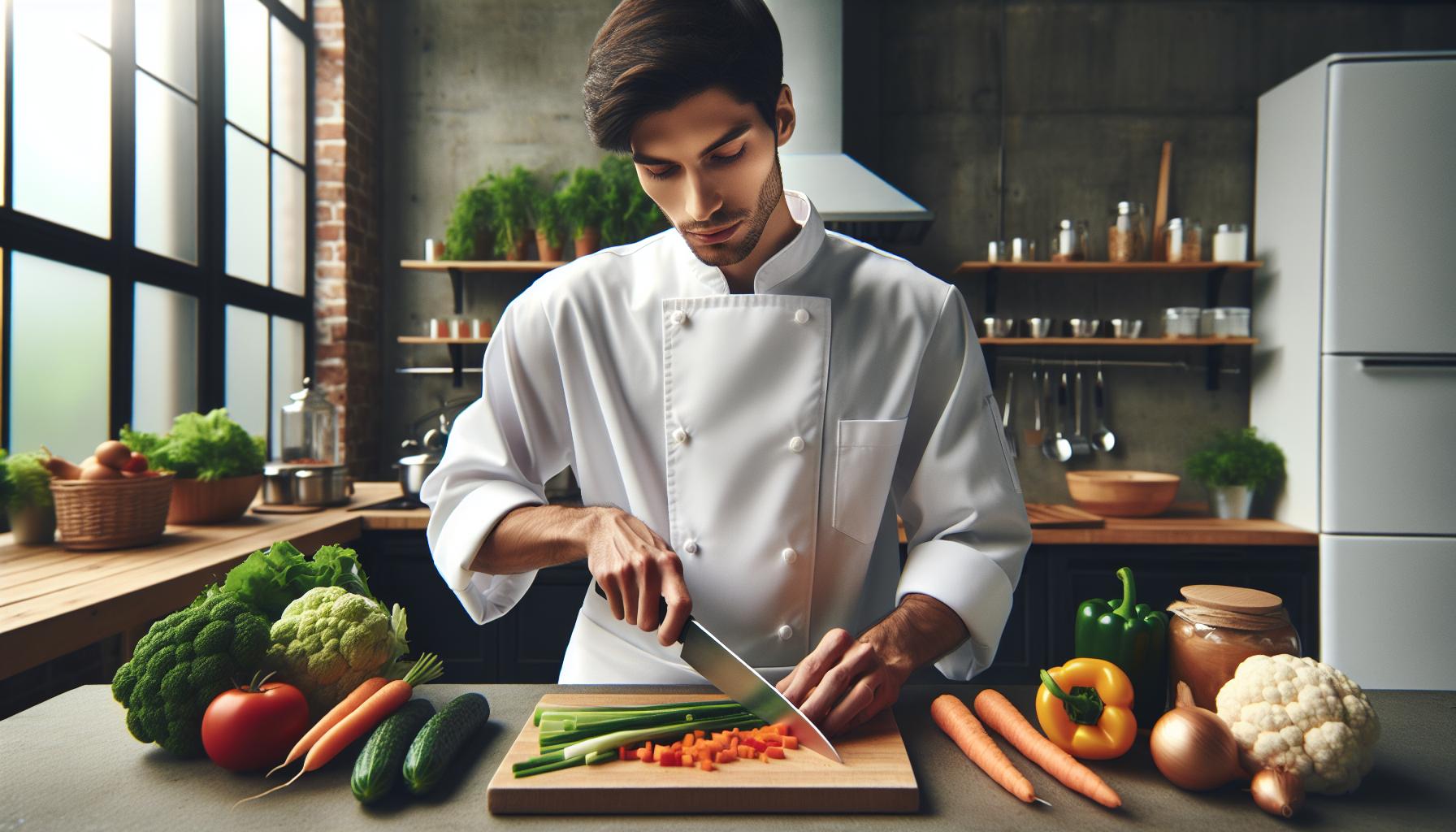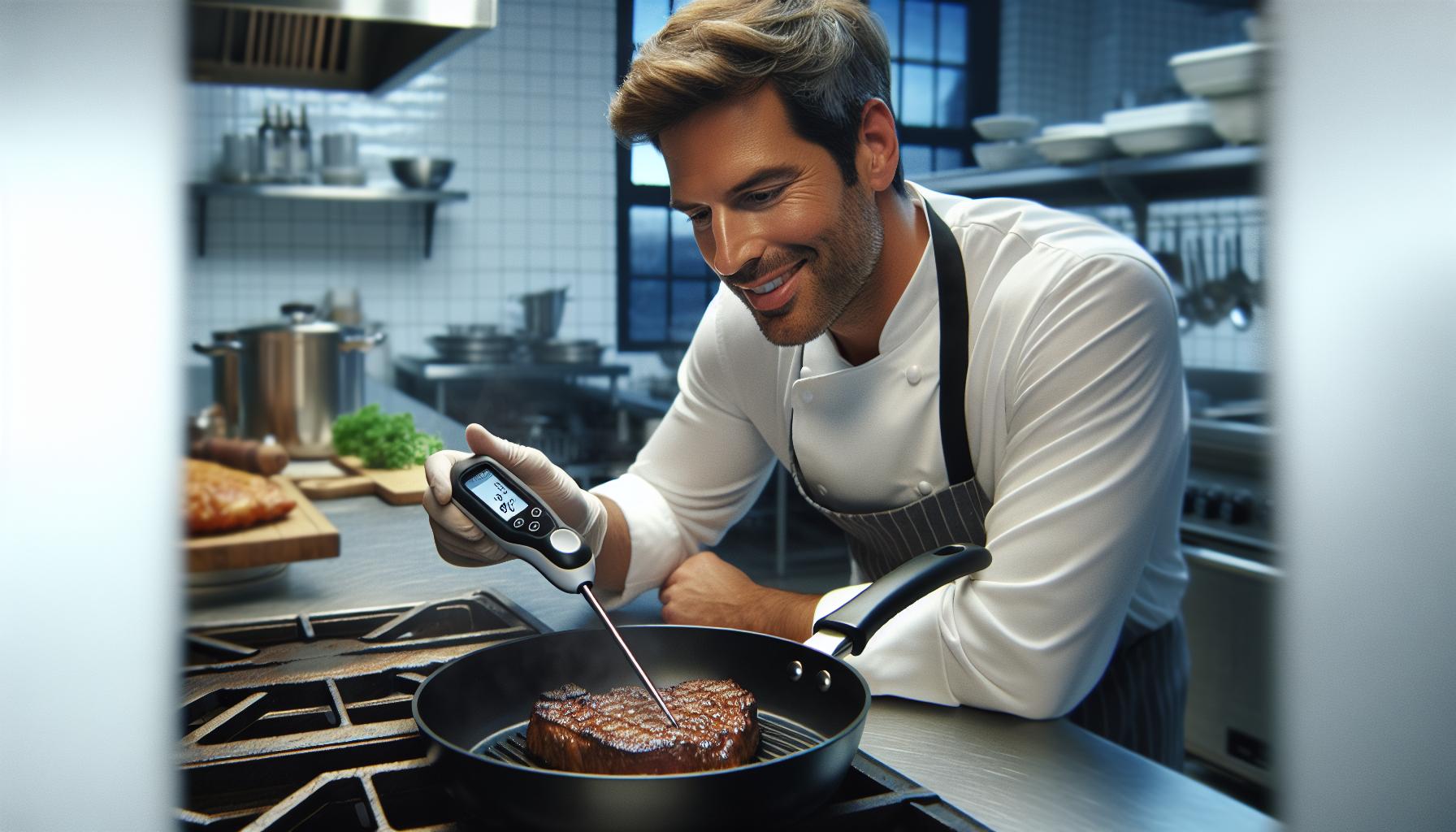Mastering techniques for cooking transforms ordinary ingredients into extraordinary meals. Whether you’re a kitchen novice or a seasoned chef, understanding the fundamental methods of food preparation can elevate your culinary game from microwaved disasters to restaurant-worthy creations.
From the sizzling art of sautéing to the slow-and-steady science of braising, techniques for cooking are the building blocks of delicious food. They’re not just fancy terms chefs throw around to sound important – these methods have been perfected over centuries to bring out the best flavors, textures and aromas in every dish. Think of them as your kitchen superpowers, turning that bland chicken breast into a juicy masterpiece or those limp vegetables into crispy, flavorful sides.
Techniques for Cooking
Professional-quality cooking starts with having the right tools on hand. The proper equipment enables precise execution of cooking techniques while saving time during meal preparation.
Must-Have Tools and Utensils
A chef’s knife serves as the foundation of food preparation, enabling precise cutting motions for ingredients. High-quality stainless steel pots in 2-quart 4-quart sizes accommodate various cooking methods like boiling pasta or simmering sauces. A 10-inch non-stick skillet handles delicate foods such as eggs fish. Essential tools include:
- Wooden spoons for stirring without scratching cookware
- Metal spatulas for flipping grilled items
- Microplane graters for zesting citrus processing garlic
- Digital thermometer for monitoring meat temperatures
- Measuring cups spoons for precise ingredient portions
- Mixing bowls in 3 sizes (2-quart 4-quart 6-quart)
- Colander for draining pasta washing produce
- Knives cutting boards near the prep counter
- Cooking utensils within arms reach of the stove
- Frequently used spices oils adjacent to cooking areas
- Clear counter space measuring 24×36 inches for food prep
- Cleaning supplies stored under the sink
- Small appliances arranged based on usage frequency
- Storage containers grouped by size purpose
Fundamental Cooking Methods

Cooking methods fall into two primary categories based on how heat transfers to food. These techniques for cooking form the foundation of culinary arts across global cuisines.
Dry Heat Techniques for Cooking
Dry heat cooking creates flavorful results through direct exposure to high temperatures. Roasting meats at 375°F produces a crispy exterior while maintaining interior moisture. Broiling uses intense overhead heat to sear steaks in 5-7 minutes. Grilling imparts distinct smoky flavors when cooking over direct flames at 400-450°F. Pan-frying requires minimal oil at medium-high heat to develop golden crusts on foods like chicken cutlets in 4-5 minutes per side. Deep-frying submerges food in 350-375°F oil to achieve uniform crispiness in 3-8 minutes. Sautéing involves quick cooking in a small amount of fat over medium-high heat to brown vegetables in 2-3 minutes.
Moist Heat Cooking Techniques for Cooking
Moist heat methods use water or steam to cook foods gently. Steaming preserves nutrients by suspending ingredients above boiling water for 5-10 minutes. Poaching keeps liquids at 160-180°F to cook delicate items like fish or eggs in 3-5 minutes. Braising combines initial searing with slow cooking in liquid at 300°F for 2-3 hours to tenderize tough cuts of meat. Simmering maintains temperatures between 185-205°F for soups stews. Blanching briefly cooks vegetables in boiling water for 30-60 seconds before shocking in ice water to maintain color texture. Boiling reaches 212°F at sea level for cooking pasta rice in 8-12 minutes.
Knife Skills and Food Preparation

Mastering knife skills enhances cooking efficiency and produces consistent results in food preparation. Proper cutting techniques create uniform pieces that cook evenly and enhance presentation.
Basic Cutting Techniques for Cooking
Professional chefs employ five fundamental cutting techniques:
- Slice: Create long uniform cuts by drawing the knife blade through food in one smooth motion
- Dice: Cut ingredients into uniform squares measuring 1/4 inch to 1 inch
- Chop: Make rough cuts for ingredients that don’t require precise uniformity
- Julienne: Cut vegetables into thin matchstick strips measuring 1/8 inch wide
- Mince: Create tiny uniform pieces by rocking the knife blade in an arc motion
Tips for precise cutting:
- Hold ingredients with fingertips curled inward
- Position the knife blade against knuckles for guidance
- Keep the knife tip anchored to the cutting board
- Maintain consistent pressure throughout each cut
Safe Handling Practices
Essential knife safety practices protect against injuries:
- Store knives in a knife block or magnetic strip
- Keep blades sharp to prevent slipping
- Clean knives immediately after use
- Carry knives point-down at the side
Proper knife grip techniques:
- Pinch the blade near the handle with thumb and forefinger
- Wrap remaining fingers around the handle
- Maintain a relaxed wrist position
- Keep elbows close to body for control
- Use a stable non-slip surface
- Place damp paper towel under board to prevent movement
- Keep separate boards for raw meat and produce
- Position board at comfortable working height
Temperature Control and Timing

Temperature control stands as a crucial element in cooking that directly impacts food safety texture flavor. Mastering heat management timing transforms ordinary ingredients into perfectly cooked dishes.
Heat Management Tips
Precise heat control enhances cooking results through strategic temperature adjustments. Setting burners to medium-high creates optimal conditions for searing meats while maintaining tenderness. Adjusting oven racks influences cooking intensity with upper positions providing more direct heat for broiling crusts. Preheating pans prevents food from sticking distributes heat evenly across cooking surfaces. Managing cooking zones enables simultaneous preparation of multiple ingredients at different temperatures. Professional chefs regulate heat by:
- Rotating pans for even cooking distribution
- Adjusting flame size based on cooking method
- Moving food between direct indirect heat zones
- Monitoring cooking vessel thickness heat retention
- Using pan lids to control moisture temperature
Using Kitchen Thermometers
Kitchen thermometers ensure food safety proper doneness across different cooking methods. Digital instant-read thermometers provide accurate temperature readings within 2-3 seconds. Specific temperature targets include:
| Food Type | Safe Internal Temperature (°F) |
|---|---|
| Poultry | 165° |
| Ground Beef | 160° |
| Fish | 145° |
| Pork | 145° |
| Egg Dishes | 160° |
- Center of thickest part away from bone
- Multiple spots in large cuts of meat
- Middle position for baked goods
- Deepest part of liquid dishes
- Side insertion for thin items
Seasoning and Flavor Development
Seasoning transforms basic ingredients into flavorful dishes through strategic spice application and taste enhancement techniques. Building depth involves understanding how different ingredients interact and complement each other throughout the cooking process.
Layering Flavors
Layering flavors starts with creating a solid foundation using aromatic vegetables like onions, carrots, celery, garlic or shallots as a base. Adding herbs at different cooking stages impacts their flavor contribution – woody herbs (rosemary, thyme) release flavors slowly when added early, while delicate herbs (basil, parsley) maintain brightness when added at the end. Umami-rich ingredients such as mushrooms, tomato paste or soy sauce create depth when incorporated during the initial cooking phases. A splash of acid (lemon juice, vinegar) brightens flavors, while a pat of butter or drizzle of olive oil adds richness and rounds out sharp edges just before serving.
Balancing Taste Elements
The five basic tastes – sweet, salty, sour, bitter, umami – work together to create harmonious dishes. Salt enhances other flavors while reducing bitterness. Sugar balances acidity in tomato sauces or vinegar-based dressings. Citrus juices or vinegars cut through rich, fatty dishes. Umami elements like aged cheeses, fish sauce or miso paste add savory complexity. Bitter components from dark greens or coffee provide contrast against sweeter ingredients. Tasting throughout cooking allows for adjustments to achieve optimal balance among these elements.
Professional Kitchen Organization
Professional kitchen organization establishes the foundation for efficient cooking processes. Proper organization minimizes errors enhances productivity creates a safer work environment.
Mise en Place
Mise en place translates to “everything in its place” in professional kitchens. This systematic approach requires measuring ingredients prepping equipment gathering tools before cooking begins. A standard mise en place setup includes:
- Prepped ingredients in clear containers
- Organized spices seasonings within arm’s reach
- Clean sanitized cutting boards knives
- Lined-up cooking vessels utensils
- Recipe instructions printed measured ingredients listed
- Kitchen towels cleaning supplies readily available
Professional chefs maintain organized stations by cleaning as they work restocking supplies immediately after use.
Kitchen Workflow
Kitchen workflow follows a logical sequence from food storage to preparation to cooking to plating. Efficient workflows incorporate these key elements:
- Storage zones organized by temperature requirements
- Prep stations arranged by task type (vegetable meat pastry)
- Cooking stations positioned near prep areas
- Plating areas located adjacent to cooking stations
- Cleaning zones separated from food preparation
- Traffic patterns designed to minimize cross-contamination
The layout creates distinct work triangles between storage prep cooking areas. Restaurant kitchens maximize efficiency by positioning frequently used items at waist level storing backup supplies in designated overflow areas.
Confident And Enjoyable Cooking Experiences
Mastering cooking techniques transforms ordinary meals into extraordinary culinary experiences. From knife skills to temperature control these fundamental methods serve as building blocks for creating impressive dishes. A well-organized kitchen equipped with essential tools enables efficient execution of these techniques while proper seasoning brings out the best flavors in every ingredient.
Anyone can elevate their cooking by focusing on these core principles. The combination of proper technique organization and understanding of flavor development paves the way for consistent and delicious results in the kitchen. With practice and attention to detail these skills become second nature leading to more confident and enjoyable cooking experiences.

